Water Hero Finalist: Matthew Norberg
The Clean Water Act (CWA) is one of the most impactful pieces of environmental legislation in U.S. history. YSI has celebrated the CWA’s 50th anniversary in 2022 by bringing awareness to what the law has accomplished and to some of the great things water quality advocates have done.
As part of our CWA Water Heroes contest in 2022, we asked for help identifying environmental leaders studying our world, educating others, and driving change. We determined the top four finalists (U.S. only) in the summer, and the general public voted for their favorite Water Hero in early October. On October 18th, 2022 - the 50th Anniversary of the Clean Water Act - we announced Brooke Klingbeil as the Grand Prize Winner!
In this blog, we introduce Water Hero Finalist #1. Meet Matthew Norberg.
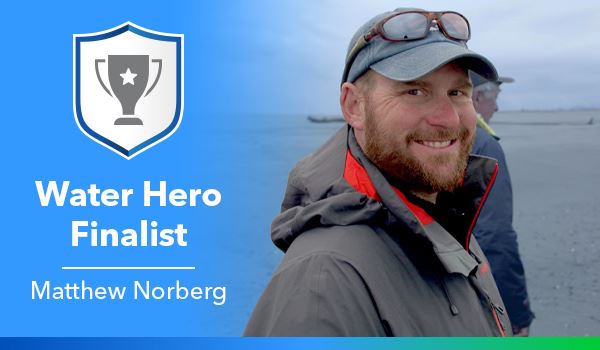
Matt Norberg has been with the Montana Department of Natural Resources and Conservation (DNRC) since 2006.
About Matthew: Matt is a hydrologist in the Water Resources Division of the Montana Department of Natural Resources and Conservation (DNRC). With over 15 years of experience at Montana DNRC, he currently serves as the Data Section Supervisor. In this role, he primarily oversees all DNRC real-time gages in the state—stream gages, surface water gages, and a network of groundwater monitoring sites.
A colleague nominated him as a Water Hero due to his unrelenting passion for launching and expanding the state’s stream gage program. In 2015, Matt began building a real-time gaging program from the ground up, as the Montana legislature tasked Matt with establishing a state-led gaging program. Under his leadership, there are over 35 gages across the state, and the program continues to grow with the goal of 100 gages by 2025. This network is helping Montanans and tribal nations meet new demands for water caused by a changing climate, increasing population, and an expanding economy. Matt also tracked down the funding needed to deploy StAGE (Stream and Gage Explorer), a new website that allows various stakeholders to view stream flow.
Through Matt’s efforts, water managers help ensure sufficient streamflows for fisheries across the great state of Montana. He also works with irrigators and others in the community on water management plans. Matt faces challenging situations when water supplies are scarce in the state, working with ranchers to shut off or reduce their irrigation demands as needed.
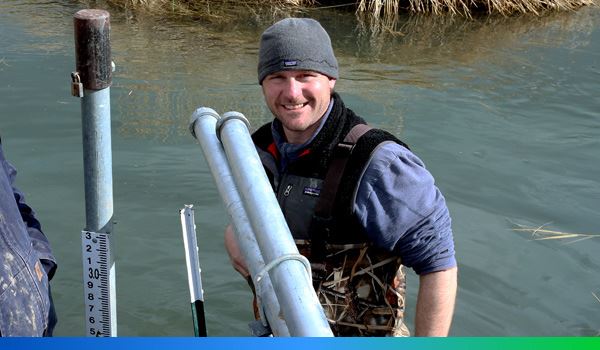
Matt Norberg oversees all DNRC real-time gages in the state. In this image, Matt is installing a new stream gage.
Matt is also the lead hydrologist on the Big Hole Arctic Grayling monitoring project. The Arctic Grayling—a species of fish native to northern North America—in the Upper Big Hole River is the last fluvial dwelling population in the lower 48 states, genetically diverse from hatchery grayling. They can only be found in this area of Montana. Matt was instrumental in ensuring that high-quality surface water data is available to maintain this grayling population.
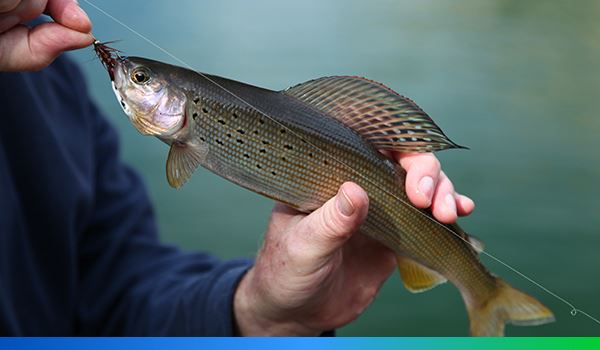
Matt is the lead hydrologist on a project that aims to maintain the last fluvial dwelling population of Arctic Grayling (Thymallus arcticus).
According to his colleagues, Matt always displays professionalism and an intense passion for Montana and its water resources. And that commitment is contagious! Matt is held in the highest regard within the hydrology community and is seen as the face of stream gaging in Montana. Now, Matt can also be described as a deserving WATER HERO.
Learn more about Matt by checking out our interview with him below:
Q: The U.S. Geological Survey (USGS) has gages throughout the country. Why did Montana DNRC want its own network of gages?
Matt: In 2015, the Montana State Legislature directed DNRC to update the state water plan. One of the key recommendations from that state water plan was to develop a gage network outside of the USGS. In essence, the DNRC was charged with increasing the number of gages throughout the state.
The specific recommendation was to develop a program that included 100 real-time surface water sites across the state by 2025. We’re about a third of the way there—we have a little over 35 real-time surface water sites, and we’re even looking to incorporate another 12 to 14 groundwater sites. While it will be challenging to make it to 100, we’ve had to overcome some challenges to make it as far as we have.
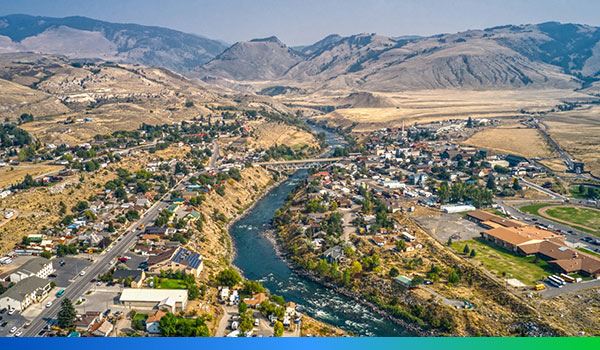
DNRC’s stream gage program aims to give the citizens of Montana advanced warning of large events, such as the unprecedented Yellowstone flooding that occurred in June 2022. In this image, the Yellowstone River flows through Gardiner, Montana, which borders Yellowstone National Park.
Q: Can you speak to the challenges of starting a stream gage program from scratch?
Matt: In 2015, I transferred to the Water Management Bureau to start and manage this program. It was completely new—there were zero real-time gages installed. For the first five years, I was solo. I had a lot of help, but I was the solo hydrologist in charge of this program.
I was getting anyone I could to help me install. I used our internal staff and regional offices as much as possible—calibrating gages, collecting field measurements, etc. It was just kind of all hands on deck, and I would use whatever help I could get.
I didn’t want the program to lose momentum once we started. I knew as soon as you begin stalling out, that’s when questions start being asked—do we really need this program? And why are they doing this?
Another challenging component was building all the backend databases, decoding transmissions, basically automating the processes. The DNRC Office of Information Technology was instrumental in helping me get this program off the ground. I learned a ton in a short amount of time about programming, databases, and troubleshooting.
Luckily, there are now two of us working on the program, and we are hiring a new HydroTech with hopefully more in the future. It’s come a long way!
Q: Besides finding people to help, what other challenges have you overcome with the stream gage program?
Matt: In 2017, our legislature made a lot of budget cuts, and I went from a healthy budget for my program to zero investment. That was really hard—growth basically just stopped. I had to take a step back and think about what we would do and how we would maintain the gages we had at the time, plus expand the network to get close to that 100 gage goal.
To find some help, we contacted interest groups and talked about collaborative agreements, funding agreements, and things like that. That’s how we got a lot of our gages moving forward.
Q: To fund the program, it seems like you had to start promoting it. What does that look like?
Matt: Yep, I’ve always tried to market the program any chance I get. For example, presenting at conferences helps get the word out. We’ve also highlighted the program on Facebook, Instagram, and other social media sites.
I should mention that it’s not like a stream gage program is something new. There are stream gages across the country with USGS, and many states have a program similar to ours. This isn’t a groundbreaking new thing that I’m doing; it’s just that Montana DNRC never had that, so I like trying to promote this program as much as possible and get the word out. And it’s working.
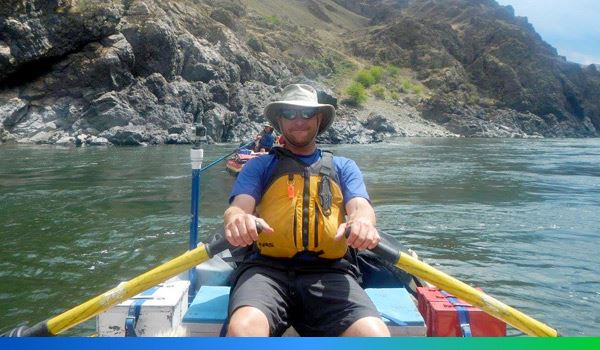
Matt drives awareness of the stream gage program whenever he can. This not only helps the general public understand the benefits of the program, it also helps with the development of funding agreements.
Q: Growing the stream gage program sounds like a lot of work. What keeps you motivated?
Matt: Whether at home constructing something in the garage or leading projects at the DNRC, I enjoy building things from scratch—taking something that doesn’t exist, making it your own and perfecting it, and continuing to see it grow. For the stream gage project, providing desperately needed surface water data for the state of Montana is really rewarding.
Because the stream gage program is near and dear to my heart, I want to continue moving it forward and make it better. Not only have we installed a lot of gages, but we’ve also evolved quite a bit. Originally we were focused on surface water sites, but now we’re incorporating a new groundwater network.
I’ve also developed a new website for DNRC called StAGE—Stream and Gage Explorer—where data from our gage stations can be seen. Now we are incorporating a hydrologic modeling component into StAGE. It would be looking at not just streamflow and snowpack but also consider irrigation water returned, irrigation withdraws, daily climate forecasting, precipitation, wind, and soil conditions. The goal is to be able to give the citizens of Montana advanced warning of large events, such as the unprecedented Yellowstone flooding that occurred in June, and help water resource professionals in times of drought.
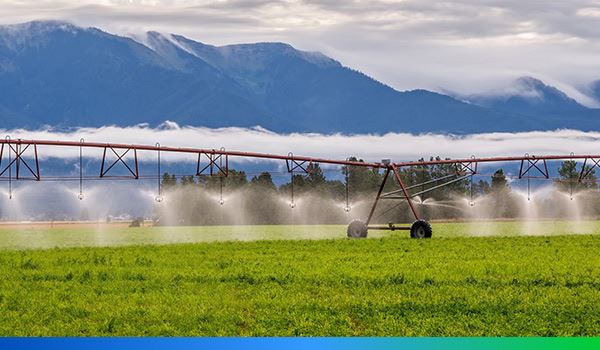
Matt works with irrigators and others in the community on water management plans.
Q: Where does your passion for the environment and the state of Montana originate from?
Matt: Growing up, I spent a lot of time with my grandparents. My grandma would take me on really long hikes all the time. And I grew a passion for the outdoors—hunting, hiking, fishing, and just being outside in nature. That’s what’s driven me: I love being outside, and protecting it is important to me.
After going to Montana State University and getting a biology and fisheries management degree, I worked for a fisheries consultant doing a lot of stream bank restoration. This seemed like a natural fit for me—I love fly fishing, and this was a chance to build fish habitat on the fly.
I then moved to Idaho with my wife, but I missed Montana and its water community. So we ended up moving back to Montana after a couple of years, and I got hired on with the DNRC as a hydrologic technician.
I just really like the work I do. I like building things, and I like being in the field collecting discharge measurements. I like the challenge of flood events, to try and capture peak flows. It keeps me going.
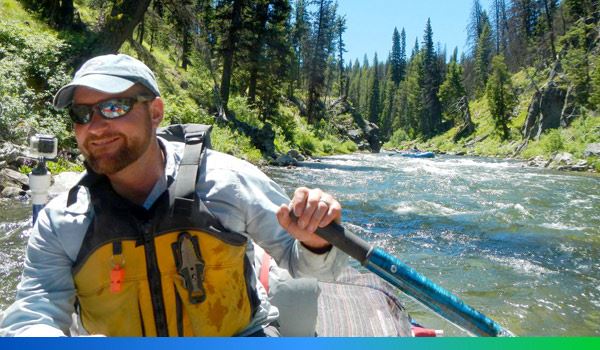
Matt’s passion for the outdoors developed at an early age. Even when he’s not on the job protecting Montana’s water resources, he’s outside enjoying activities that bring him close to the water.
Q: In your eyes, what are the biggest water issues Montana faces?
Matt: As a headwater state, Montana is very susceptible to climate change, and there’s a trend of hotter, drier climate over the years. Things are just changing.
We used to be able to count on this big snowpack over the winter in Montana, and then we would have spring runoff. It was common to maintain baseflow. But now we have uneven snowpack years, and we’re getting these rather large precipitation events—big shots of water all at once. If you look at the overall picture, maybe we’re still within a normal range of precipitation for the year, but that doesn’t necessarily do everyone a lot of good if you get all your water in one week and then the rest of the summer is hot and dry.
So water availability, in general, is declining in Montana. Some of this is due to climate change, but we’re also starting to experience a population increase. Most of our decrease in water availability isn’t necessarily due to irrigation; it’s also municipalities—water supply to cities.
Another issue is related to fisheries. We have a lot of trout streams, and trout need cold, clear water. As the availability of that water declines due to some of the issues I already mentioned, trout populations suffer. Also, irrigation suffers with a decrease in water availability.
Q: Do you believe citizens of Montana are aware of these issues?
Matt: The natural resources in Montana are vast, and water is one of the most important, if not the most important, resource. Whether you’re a fisherman, an irrigator, a boater, or general public, rivers in Montana are an important part of our culture. Recreation is critical in Montana—it’s a big economic driver—and when you don’t have a lot of water, that industry suffers. Everyone loves water here—it’s cold, clear, and pure. People are very in tune with rivers and streams in Montana.
With different climatic events—multiple years of drought, the Yellowstone River flooding this year—stream gaging has come up in the public eye in Montana. Now different agencies, irrigators, recreationists, and others rely on the data we produce. Because so many people are using this data, I want to make sure what we make publicly available is of the highest quality.
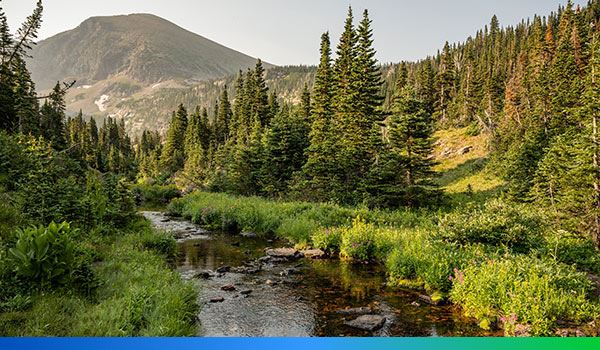
According to Matt, rivers are an important part of Montana’s culture. However, water resources in the state do face challenges caused by changing climate, increasing population, and an expanding economy.
Q: It will take water heroes to overcome many water issues we’ve discussed. What does it mean to you to be nominated as a water hero?
Matt: Just very humble and very grateful. Even if I don’t win, I’m just happy to know my coworkers think that highly of me!
Check out the other Clean Water Act Water Hero finalists - Harry Stone, Brooke Klingbeil, and Paul Dombrowski.